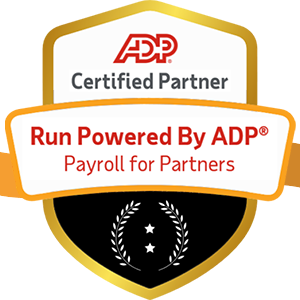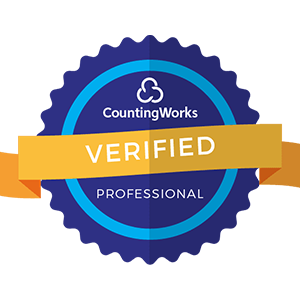
The Hidden Recruiting Goldmine: Employee referrals deliver 10x higher hire rates (6.2% vs 0.6%), reduce time-to-hire by 42%, and generate candidates who stay 70% longer than external hires. Despite representing only 7% of applications, referrals account for 40% of successful hires and deliver 25% higher performance ratings. Yet 65% of organizations lack structured referral programs, leaving this powerful talent source largely untapped.
In an increasingly competitive talent market where traditional recruiting channels deliver diminishing returns, employee referrals represent the most underutilized competitive advantage available to organizations. While companies invest millions in external recruiting firms, sophisticated sourcing technologies, and employer branding initiatives, their most valuable talent identification resource sits right within their existing workforce.
The mathematics of modern recruiting tell a sobering story. Average cost-per-hire continues climbing, reaching $4,700 according to SHRM research, while time-to-fill stretches longer as competition for skilled professionals intensifies. Response rates to outbound recruiting messages have declined by 35% over the past five years as professionals become increasingly selective about opportunities they pursue.
Employee referrals transcend these challenges by leveraging trust relationships and insider knowledge that external recruiting cannot replicate. When employees recommend candidates, they're not just identifying skills—they're vouching for cultural fit, work ethic, and potential contribution based on firsthand knowledge that no resume or interview process can fully capture.

Understanding why referrals consistently outperform other recruiting sources requires examining the psychological and practical factors that make these recommendations so effective.
Referrals carry implicit endorsements that significantly influence candidate quality and hiring manager perceptions. When employees stake their professional reputations on candidates, they naturally apply rigorous mental filtering that eliminates unsuitable prospects before formal applications occur.
Social proof psychology explains why referred candidates receive more favorable consideration throughout hiring processes. Hiring managers unconsciously perceive referred candidates as lower-risk choices because another trusted team member has already validated their capabilities and fit.
Network homophily—the tendency for similar people to connect—means referrals often share values, work styles, and cultural preferences with existing employees. This similarity increases the likelihood of successful integration and long-term retention.
Employee referrers provide candidates with insider information about role expectations, team dynamics, and organizational culture that external applicants cannot access. This transparency enables better self-selection, with unsuitable candidates removing themselves before applying.
Realistic job previews delivered through referral conversations help set appropriate expectations and reduce the likelihood of early turnover due to unmet expectations or cultural misalignment.
Bidirectional information flow benefits both parties—employees gain insights about candidates' motivations and career objectives while candidates learn about growth opportunities and workplace realities.
Referred candidates enter organizations with established connections that facilitate faster onboarding and integration. This built-in support network reduces the typical adjustment period while providing mentorship and guidance during critical early months.
Social capital transfer from referrers to new hires helps candidates navigate unwritten organizational rules and build relationships more quickly than would be possible starting from scratch.
Team acceptance occurs more readily when candidates arrive with existing endorsements from respected colleagues, reducing the typical proving period required for external hires.
Successful employee referral programs require strategic design that addresses motivation, process efficiency, and measurement systems while aligning with broader talent acquisition objectives.
Financial incentives remain important but shouldn't be the sole motivator for employee participation. Research indicates that intrinsic motivations—desire to help friends, pride in contributing to team success, and recognition for talent identification skills—often drive sustained engagement more effectively than monetary rewards alone.
Tiered bonus structures should reflect the difficulty and importance of different roles while providing meaningful rewards that justify the time and social capital employees invest in making referrals. Successful programs often combine base referral bonuses with role-specific premiums for hard-to-fill positions.
Non-monetary recognition through referral leaderboards, special events, and public acknowledgment creates ongoing engagement while building referral activity into organizational culture. Annual referral awards and exclusive recognition programs elevate top contributors while encouraging broader participation.
Charitable giving options allow employees to direct referral bonuses to causes they support, appealing to values-driven professionals while enhancing corporate social responsibility initiatives.
Modern referral platforms must provide seamless experiences that minimize friction while maximizing visibility into process status and outcomes. Mobile-optimized interfaces enable referrals during commutes, networking events, or other moments when employees encounter potential candidates.
Social integration capabilities allow employees to easily share job opportunities through professional networks while tracking which referrals generate applications and eventual hires.
Automated communication keeps referrers informed about candidate progress without requiring manual updates from busy recruiters. Regular status updates maintain engagement while demonstrating organizational appreciation for referral contributions.
Analytics dashboards provide employees with insights into their referral success rates and impact, gamifying the process while encouraging continued participation through transparent performance feedback.
Streamlined submission processes reduce barriers to participation while ensuring referrers can easily provide context about candidates' backgrounds, motivations, and fit considerations that influence hiring decisions.
Fast-track interviewing for qualified referrals demonstrates respect for employee recommendations while creating positive experiences that encourage future participation. Priority scheduling and dedicated interview slots signal organizational commitment to referral program success.
Candidate communication strategies ensure referred applicants receive exceptional service that reflects positively on both the organization and the referring employee. Special treatment and insider information create memorable experiences that strengthen employer brand regardless of hiring outcomes.
Feedback loops provide closure for referrers when candidates aren't selected, explaining decision rationale while maintaining relationships and encouraging future referrals.

Sophisticated organizations implement targeted approaches that maximize referral effectiveness while addressing specific talent needs and market conditions.
Employee network analysis identifies individuals with particularly valuable connections for specific roles or industries. These insights enable targeted outreach and personalized incentives that encourage participation from employees with access to scarce talent pools.
Alumni networks provide rich sources of candidates who already understand organizational culture and expectations. Structured programs that engage former employees as referral sources often generate high-quality candidates with proven cultural fit.
Industry expertise mapping identifies employees with specialized knowledge or connections in target markets, enabling focused outreach when specific skills or experience become critical business needs.
Passive referral mining analyzes employee social media connections and professional networks to identify potential candidates even when employees haven't actively made referrals.
Referral campaigns tied to specific hiring needs or business cycles create urgency while focusing employee attention on priority roles. Limited-time enhanced bonuses and special recognition generate increased activity during critical periods.
Campus recruiting integration leverages employees' university connections to identify entry-level talent while building relationships with academic institutions for long-term pipeline development.
Conference and event activation encourages employees to make referrals during industry gatherings when they're naturally connecting with peers and potential candidates.
Diversity-focused referral initiatives specifically encourage referrals from underrepresented groups while providing additional incentives for diverse candidate recommendations.
Partner company referral exchanges create mutually beneficial arrangements where organizations share candidate information for non-competing roles while expanding available talent pools.
Vendor and client network utilization leverages business relationships to identify candidates working for partners, suppliers, or customers who might be interested in new opportunities.
Industry consortium participation enables sharing of best practices and candidate information across non-competing organizations facing similar talent challenges.
Comprehensive measurement systems track both quantitative outcomes and qualitative indicators of referral program health while identifying opportunities for continuous improvement.
Referral conversion rates measure the percentage of referred candidates who progress through various hiring stages, providing insights into both referral quality and process efficiency.
Source quality comparisons evaluate referred candidates against other recruiting channels across metrics like performance ratings, retention rates, and time-to-productivity.
Employee participation metrics track both breadth and depth of engagement, identifying top contributors while revealing opportunities to expand program reach.
Cost-per-hire analysis demonstrates financial impact while supporting business case development for program investment and expansion.
Time-to-fill reduction measures the speed advantage referrals provide compared to other sourcing methods, quantifying operational efficiency benefits.
New hire satisfaction surveys compare referred employees' onboarding experiences and early job satisfaction against other hire sources, revealing integration advantages.
Manager satisfaction with referred hires provides insights into performance and cultural fit while identifying areas where referral processes might be enhanced.
Referrer feedback collection gathers insights about program usability, incentive effectiveness, and suggested improvements from active participants.
Long-term retention analysis tracks whether referral advantages persist over extended periods or concentrate in early employment phases.
Regular program reviews analyze performance trends while identifying opportunities for process refinement, incentive adjustment, or technology enhancement.
Benchmarking against industry standards provides context for program performance while identifying best practices that might be adapted to specific organizational needs.
Pilot testing of new features, incentives, or processes enables data-driven optimization while minimizing risk to overall program effectiveness.
Successful referral programs require proactive management of potential issues that can undermine effectiveness or create unintended consequences.
Homophily bias in personal networks can reduce diversity if referral programs become primary talent sources. Balanced sourcing strategies must maintain multiple pipeline channels while implementing specific initiatives to encourage diverse referrals.
Inclusive referral practices provide education about unconscious bias while encouraging employees to consider diverse candidates from their networks who might not be obvious choices.
Diverse referrer engagement specifically encourages participation from underrepresented employees whose networks may provide access to diverse talent pools that other recruiting methods miss.
Monitoring and adjustment of referral demographics ensures programs contribute to rather than detract from diversity objectives while maintaining quality and efficiency benefits.
Referral bias prevention ensures that referred candidates undergo the same rigorous evaluation processes as other applicants while avoiding preferential treatment that compromises hiring standards.
Structured interview processes maintain consistency across all candidate sources while providing objective evaluation criteria that reduce potential influence from referral relationships.
Performance monitoring of referred hires validates program effectiveness while identifying any patterns that might indicate evaluation bias or inadequate screening.
Feedback integration from hiring managers helps calibrate referral quality expectations while identifying areas where additional candidate information or pre-screening might improve outcomes.
Rejection communication strategies provide respectful, constructive feedback when referred candidates aren't selected while maintaining positive relationships with referring employees.
Expectation management ensures employees understand referral processes, evaluation criteria, and timeline expectations while preventing unrealistic assumptions about hiring outcomes.
Confidentiality protocols protect sensitive information about candidates and hiring decisions while maintaining trust relationships with both referrers and applicants.
Conflict resolution procedures address situations where referral relationships create awkward dynamics or workplace tensions requiring careful management.

Employee referral programs continue evolving as technology advances and workforce patterns change, creating new opportunities and challenges for talent acquisition leaders.
Artificial intelligence applications increasingly identify optimal referral opportunities by analyzing employee networks, skills databases, and job requirements to suggest specific individuals for targeted outreach.
Social media integration enables automated tracking of employee connections while providing insights into network value and referral potential without compromising privacy.
Predictive analytics help identify which employees are most likely to make successful referrals based on historical patterns, network characteristics, and engagement indicators.
Chatbot interfaces provide 24/7 support for referral questions and submissions while gathering feedback about program effectiveness and user experience.
Freelancer and contractor referrals expand traditional employee referral concepts to include temporary workers, consultants, and other non-traditional employees who maintain valuable professional networks.
Alumni network formalization creates structured programs that engage former employees as ongoing referral sources while maintaining relationships that benefit both parties.
Industry network platforms enable referral sharing across organizational boundaries while creating community-based approaches to talent identification and sharing.
Geographic distribution of remote workforces creates new referral opportunities across broader markets while requiring technology solutions that support global participation.
Cultural adaptation ensures referral programs work effectively across different cultural contexts where relationship dynamics and networking patterns may vary significantly.
Virtual networking support helps remote employees build and maintain professional relationships that support ongoing referral activity despite physical distance from colleagues and industry contacts.
Organizations planning to launch or enhance referral programs benefit from systematic approaches that build capability while avoiding common implementation pitfalls.
Current state assessment evaluates existing referral activity, employee networks, and organizational readiness for structured program implementation.
Program design decisions address incentive structures, technology requirements, process workflows, and measurement systems while aligning with broader talent acquisition strategy.
Stakeholder engagement builds support among leadership, hiring managers, and employee populations while addressing concerns and incorporating feedback into program design.
Technology selection evaluates platform options against requirements while considering integration needs, user experience, and long-term scalability.
Limited scope pilots test program concepts with specific employee groups or job categories while gathering feedback and refining processes before broad deployment.
Performance measurement establishes baseline metrics while tracking early indicators of program effectiveness and employee engagement.
Process optimization incorporates lessons learned from pilot experiences while adjusting procedures, communications, and incentives based on actual usage patterns.
Success communication builds momentum by sharing early wins while encouraging broader participation through demonstrated value and positive experiences.
Organization-wide deployment implements refined program across all eligible employees while maintaining quality and consistency of experience.
Training and communication programs ensure all stakeholders understand program benefits, processes, and expectations while providing ongoing support for questions and issues.
Performance monitoring tracks comprehensive metrics while identifying trends and patterns that inform continuous improvement efforts.
Culture integration embeds referral activity into organizational norms through recognition, leadership modeling, and consistent reinforcement of program value.
Employee referral programs represent one of the most powerful yet underutilized tools in modern talent acquisition. When properly designed and executed, these programs transform every employee into a talent scout while creating sustainable competitive advantages that compound over time.
The organizations that will dominate future talent markets are those that recognize and harness the collective network power of their existing workforce. By creating systematic approaches to referral generation, management, and optimization, companies can access talent pools that remain invisible to competitors relying solely on traditional recruiting methods.
Success requires more than simply asking employees to "send us your friends." It demands strategic program design, technology enablement, and cultural integration that makes referral activity a natural and rewarding part of the employee experience. When these elements align, organizations create virtuous cycles where excellent employees attract other excellent employees, continuously raising the bar for organizational capability.
The future belongs to organizations that understand talent acquisition as a team sport rather than a recruiting department function. By empowering employees to become active participants in talent identification and attraction, companies transform their entire workforce into a competitive recruitment advantage that generates results long after traditional sourcing methods have been exhausted.
The question facing talent acquisition leaders is not whether employee referrals work—the data clearly demonstrates their effectiveness. The question is how quickly and effectively organizations can build sophisticated referral capabilities that unlock the full potential of their employee networks while maintaining quality, diversity, and cultural standards that support long-term success.
Those who answer this question with urgency and strategic thinking will find themselves with sustainable advantages in the war for talent, while those who continue relying primarily on external sources will struggle with increasing costs, longer time-to-fill, and lower quality outcomes that characterize traditional recruiting approaches in today's competitive environment.


